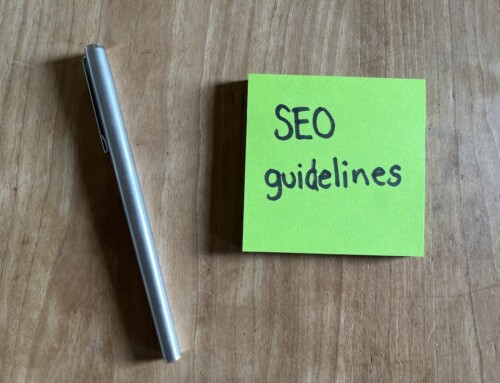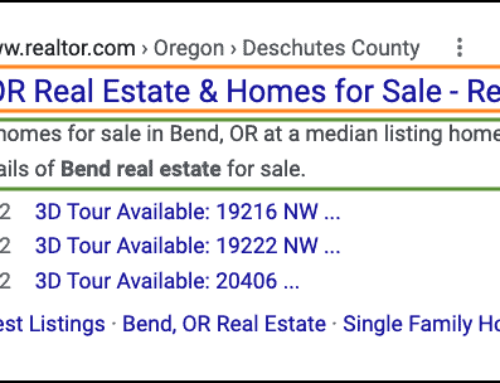A Guide to Backlinks
What are backlinks?
A backlink is an incoming hyperlink from one page on a website to another page. Backlinks can be internal whereby a page on a site links to another page on the same site. External backlinks link from a page on one web site to a page on another website. Incoming links are those which come into your website, and outbound links are those which link out from your website to another website.
How important are backlinks?
Backlinks are one of many signals google and bing factor into their rank calculations. The logic here is that sites with inbound links are trusted by other reputable sites. Websites with a high number of backlinks from trusted sites can expect to be rewarded with improved rank in search results.
How to implement backlinks that help your website
Let’s walk through the keys ways in which you may implement backlinks that will be most impactful to your website.
Where to Implement Backlinks:
-
- Backlinks from a specific piece of content to another specific piece of content are of greatest value
- Backlinks from global elements, such as the footer on your website, can be helpful when there are partnerships between brands
- Backlinks from content that’s been indexed and ranks well in search will be more impactful than backlinks from lesser known or less popular pages. The logic here is we want the search engines to discover this content, and by adding backlinks to pages which are already being crawled, indexed, and visited they will be discovered that much quicker.
Link Text and URLs:
-
- Link title text and URL matter – we want backlinks pointing to us which have link title text which we wish to rank for. When another sites is linking to us, and we have the opportunity to request a link, be mindful of these things:
- Ask for specific link title text. For example, a link to ‘basics of backlinking’ is a far better title text link than ‘read this’ or ‘more info’. We want the link title to be the keyword we wish to rank for in lieu of some generic keyword (like ‘read more’).
- Backlinks should be contextually relevant. We want a link from a page discussing a specific topic to link to our related content – if it’s off topic, it’s unlikely it will be of much help
- Use common sense when crafting or contemplating backlinks using keyword rich title text and relevant URLs
- Link title text and URL matter – we want backlinks pointing to us which have link title text which we wish to rank for. When another sites is linking to us, and we have the opportunity to request a link, be mindful of these things:
Where to Backlink, and How Many:
-
-
-
- Avoid saturating a page with outbound links. It’s natural and normal to link our to another site but to link out to 10 is overkill. We don’t want dozens of inbound links on a page – 2 to 3 outbound links per page is a reasonable rule of thumb that can be exceeded when necessary. Remember these guidelines:
- Backlinks should be there to add value and understanding to the topic
- Backlinks should call attention to related services or products
- Internal backlinks to related topics, specialties, or related content is a good practice. Again, strive for 2 to 5 internal backlinks with the primary goal of bringing attention to related content found elsewhere on the site. One link from a trusted or established source is far more valuable than many from low-quality sites. This is one case where quality is far more relevant than quantity.
- For pages and areas of your business you want to see growth, backlinking to these pages from within your site can be impactful. Even more impactful is generating backlinks from other trusted sites to these pages.
- Avoid saturating a page with outbound links. It’s natural and normal to link our to another site but to link out to 10 is overkill. We don’t want dozens of inbound links on a page – 2 to 3 outbound links per page is a reasonable rule of thumb that can be exceeded when necessary. Remember these guidelines:
-
-
Example of backlink code with good title text
Let’s get to the specifics with an example of a backlink with good title text:
For service providers, we recommend you check out our <a href=”https://www.webabledesign.com/structured-data/microdata-markup-for-service-business/”>Schema Markup for Service Business</a> perspective.
What are NoFollows?
A nofollow is a way for us to tell search engines not to not transfer your page rank, or your hard-earned SEO mojo, to this other website. In general, use NoFollows to link to less trusted websites.
Example of NoFollowed backlink code
NoFollow code differs slightly in code structure. Here’s an example illustrating how the previous example would be modified to NoFollow it:
For service providers, we recommend you check out our <a href=”https://www.webabledesign.com/structured-data/microdata-markup-for-service-business/” rel=”nofollow“>Schema Markup for Service Business</a> perspective.
Backlinks to Avoid
Reciprocal Linking
Every webmaster has received requests for backlinks in exchange for backlinks. Avoid the practice of reciprocal linking, and instead pass all backlink requests through your common sense filter, ensuring all backlinks add value or help convey a message to your audience. Google and Bing are watching for reciprocal links, especially contextually irrelevant backlinks, and potential penalties may result.
Paying for Backlinks
Never pay for backlinks as any website taking payment for these will likely be implementing poor quality backlinks, to unrelated content, and to many other sites. Think of this as cheating, and cheaters never prosper. The same is true for incentivizing reviews of your business or negative reviews of your business – this is perceived as another form of cheating that will have negative consequences on your website. Directory links fall in the category of paying for links, or low quality links.
Internal Backlinks (or crosslinks)
Internal backlinks as previously described, are links from one page on a site to another page on that same site. Use common sense, adding backlinks to other sections of the website that are related and may be of interest to the visitor. Think of these as accomplishing two goals:
- Bringing related and relevant content to the visitors attention
- Signaling google and bing that these pieces of content are related or complimentary in some way
Internal backlinks (crosslinks) should always be followed.
Where to Start with Internal Backlinks
I recommend starting with your top 25 or 50 most visited pages, adding internal backlinks (crosslinks) to other topics and subject areas where of greatest value to the visitor, and which will signal to the search engines that the content is related. This strategy can serve as an effective means of improving rank for pages that are not ranking, when linking to these underperforming pages from pages which are performing.
References: Schema.org



